
John Rennie was a Scottish civil engineer who designed many bridges, canals, docks and warehouses, and a pioneer in the use of structural cast-iron.
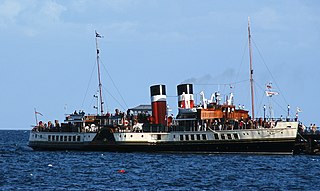
A steamship, often referred to as a steamer, is a type of steam-powered vessel, typically ocean-faring and seaworthy, that is propelled by one or more steam engines that typically move (turn) propellers or paddlewheels. The first steamships came into practical usage during the early 19th century; however, there were exceptions that came before. Steamships usually use the prefix designations of "PS" for paddle steamer or "SS" for screw steamer. As paddle steamers became less common, "SS" is incorrectly assumed by many to stand for "steamship". Ships powered by internal combustion engines use a prefix such as "MV" for motor vessel, so it is not correct to use "SS" for most modern vessels.

Brigadier General Sir Samuel Bentham was an English mechanical engineer and naval architect credited with numerous innovations, particularly related to naval architecture, including weapons. He was the only surviving sibling of philosopher Jeremy Bentham, with whom he had a close bond.

The first USS Wampanoag was a screw frigate in the United States Navy built during the American Civil War.
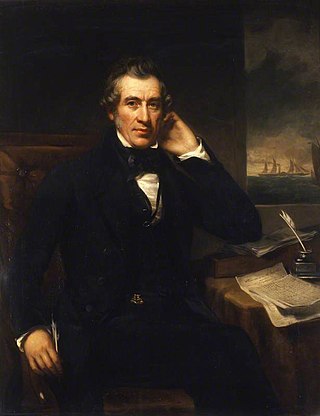
Sir William Fairbairn, 1st Baronet of Ardwick was a Scottish civil engineer, structural engineer and shipbuilder. In 1854 he succeeded George Stephenson and Robert Stephenson to become the third president of the Institution of Mechanical Engineers.
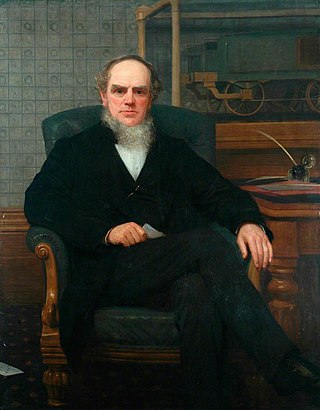
John Ramsbottom was an English mechanical engineer. Born in Todmorden, then on the county border of Yorkshire and Lancashire. He was the Chief Mechanical Engineer for the London and North Western Railway for 14 years. He created many inventions for railways but his main legacy is the split metal piston ring, virtually all reciprocating engines continue to use these today.

Benjamin Franklin Isherwood was an engineering officer in the United States Navy during the early days of steam-powered warships. He served as a ship's engineer during the Mexican–American War, and after the war did experimental work with steam propulsion. Rising to the rank of rear admiral, as Engineer-in-Chief of the Navy during the Civil War, he helped to found the Navy's Bureau of Steam Engineering.
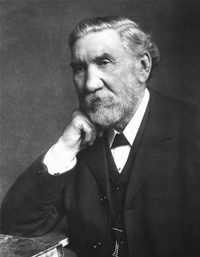
James Howden was a Scottish engineer and inventor who is noted for his invention of the Howden forced draught system for steam boilers.

The Stevens Battery was an early design for a type of ironclad, proposed for use by the United States Navy before the American Civil War. One full-sized example was begun but never completed due to lack of funding.

John Penn (1805–1878) was an English marine engineer whose firm was pre-eminent in the middle of the 19th century due to his innovations in engine and propeller systems, which led his firm to be the major supplier to the Royal Navy as it made the transition from sail to steam power. He was also president of the Institution of Mechanical Engineers on two occasions.

A marine steam engine is a steam engine that is used to power a ship or boat. This article deals mainly with marine steam engines of the reciprocating type, which were in use from the inception of the steamboat in the early 19th century to their last years of large-scale manufacture during World War II. Reciprocating steam engines were progressively replaced in marine applications during the 20th century by steam turbines and marine diesel engines.
J. and G. Rennie was a British engineering company based in Millwall, London, England. They were involved in manufacture of marine engines, and some complete ships, as well as other diverse onshore engineering projects. An association with railway engines is usually attributed to G. and J. Rennie, which may suggest they used a second company to keep the books separate, and there was also George Rennie & Sons, which is associated with the development and patents of the steam disc engine. All three companies appear to have been in existence at the same time.

John Hick was a wealthy English industrialist, art collector and Conservative Party politician who sat in the House of Commons from 1868 to 1880, he is associated with the improvement of steam-engines for cotton mills and the work of his firm Hick, Hargreaves and Co. universal in countries where fibre was spun or fabrics woven.

W & J Galloway and Sons was a British manufacturer of steam engines and boilers based in Manchester, England. The firm was established in 1835 as a partnership of two brothers, William and John Galloway. The partnership expanded to encompass their sons and in 1889 it was restructured as a limited liability company. It ceased trading in 1932.
John Grantham (1809–1874) was an English engineer, born in Croydon Surrey, who was involved in marine, railway and tramway engineering. He was the second son of another John Grantham. After leaving school, John (junior) worked with his father surveying routes for projected railway lines in England.

Horace See was an American mechanical engineer, marine engineer, naval architect, inventor, and superintendent. He is known as principal naval architect at the William Cramp & Sons shipyard in Philadelphia, and as president of the American Society of Mechanical Engineers in the year 1888–89.
Nicholas Procter Burgh (1834–1900) was a British marine engineer, known for his work on marine engines, marine engineering, screw propulsion, boilers and boiler-making, and the indicator diagram.
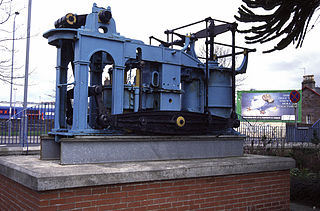
Messrs Robert Napier and Sons was a famous firm of Clyde shipbuilders and marine engineers at Govan, Glasgow founded by Robert Napier in 1826. It was moved to Govan for more space in 1841. His sons James and John were taken into partnership in 1853.

HMS Penelope was first laid down as one of the many sail frigates that England built to a French model. She was then changed to a unique steam paddle frigate. For some time she was a very famous ship, having a claim to being the first steam frigate. In the end the promise that she would be the first of a line of true steam paddle frigates proved false.
Charles Atherton was a British scientific engineer from Calne, Wiltshire. He was appointed as Chief Engineer and Inspector of Steam Machinery at Her Majesty's Woolwich Dockyard in 1847; and a second time between 1851 and 1862. He served in the same capacity at Her Majesty's Devonport Dockyard between 1848 and 1851.















